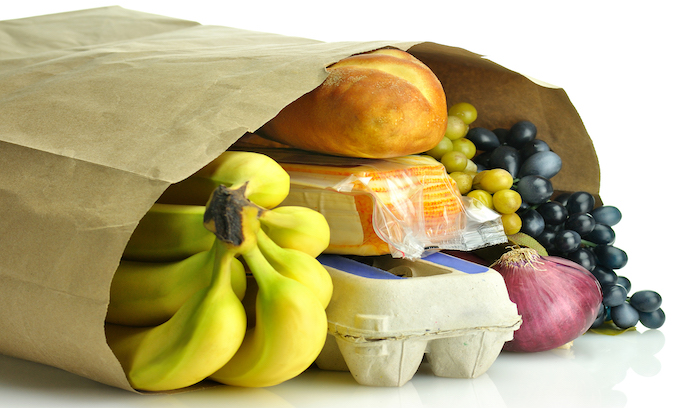Have you felt sticker shock when filling the grocery cart?
October’s reading of the Consumer Price Index only adds a bit of indigestion to what we already know. The jump in grocery prices is stunning.
Inland Empire groceries lead the four-county pack, costing 13.3% more in a year. In Los Angeles and Orange counties, food inflation is up 10.8%. Groceries nationwide were 12.4% costlier in the past year.
Southern Californians, did you get a 6% raise this summer?
This is a growth story. And not a good one. Especially when food inflation far outpaces 6% average raises for Southern California workers got during the past year.
In Riverside and San Bernardino counties, grocery inflation has averaged 10.8% this year vs. a 4.3%-a-year pace in 2019-2021. In L.A.-O.C., it’s 10.9% this year vs. 2.8% the previous three years.
In every meal
It’s not just a few skyrocketing prices. Harsh food inflation can be seen on every aisle.
My trusty spreadsheet looked at the biggest jumps nationwide in individual food categories. You could make a menu plan for an entire day using these items with skyrocketing costs.
Breakfast: Eggs (prices up 43% in 12 months), butter (up 27%), cereals (up 17%), coffee (up 15%), and milk (up 14.5%).
Lunch: Bread (up 15%), soups (up 17%), lunch meats (up 19%), frankfurters (up 15%) and snacks (up 14%).
Dinner: Chicken (up 14.5%), rice-pasta-cornmeal (up 17%), canned fruits and vegetables (up 19%), and potatoes (up 15%).
Salad: Lettuce (up 18%), salad dressing (up 20%), and olives-pickles-relishes (up 17.5%).Related Articles
Dessert: Cakes, cupcakes, and cookies (up 16%).
… even feeding Fido or Fluffy hurts, with pet-food prices up 15% in a year.
And there are distressing holiday greetings inside the CPI, too: Hints at what popular fare for upcoming family gatherings might cost.
Turkey is 17% pricier than a year ago. Meanwhile, ham costs 9% more and gravy’s up 15%. Maybe skip the peas? They’re up 12%, while rolls are up 14% and pies will cost 19% more.
Can’t skip groceries
Food inflation is financial pain that hits everyone.
By CPI estimates, groceries are 8.5% of a typical household’s spending. You know that cost is a far larger slice of the family budget for folks with lesser means.
Food is a necessity and not a purchase to delay.
Instead, consider skipping overly inflated items as tracked by the CPI. Start with dining out, which is 9% pricier in a year. Or air travel, which is up 43%. A new car is running 9% more, if you can find one. Meanwhile, at home flooring costs are up 13%, dishes 12% higher and even stationery is up 13%.
No quick fix
Help will not come soon. Food inflation has few fast solutions.
The food chain is stressed. Drought has hurt the harvests. Labor shortages make picking, shipping and processing the food even pricier. Higher fuel expenses increase transportation costs. And the war in Ukraine, a farming giant, makes matters even trickier.
The institution doing the most about overall inflation, the Federal Reserve, is mostly powerless when it comes to food costs.
“My colleagues and I are acutely aware that high inflation imposes significant hardship as it erodes purchasing power, especially for those least able to meet the higher costs of essentials like food, housing, and transportation,” Fed chairman Jerome Powell said at a recent press conference.
But he later added, “We don’t directly affect, for the most part, the food and energy prices.”
Jonathan Lansner is the business columnist for the Southern California News Group. He can be reached at [email protected]
©2022 MediaNews Group, Inc. Visit ocregister.com. Distributed by Tribune Content Agency, LLC.
—-
This content is published through a licensing agreement with Acquire Media using its NewsEdge technology.



















This inflation is caused by the Democrat Party’s “New Green Deal”, war on oil and their insane overspending!
And yet Fools still voted for Democrats in the mid-term elections.
EVERYTHING depends on oil, from the farmer that produce food to the truck driver who delivers the food and everything else.
I guess the Democrat Party’s “useful idiots” like high fuel cost and high prices on everything else.
Why do these fools want to move to the Republican States??
SO THEY can spread their cancer nationwide!
I think it will get a lot worse before it gets better. I see more people online asking for help from neighbors, just enough to get by until payday or maybe a ride to the food pantry or pleading for a mechanic who will wait for his money. These are things that people have to have but if they voted at all I bet they voted Democrat.
I say tough luck.. HELP YOUR OWN first..
As we approach winter and cold weather the average American is going to be facing a new challenge “heat or eat”. The food costs are up, the fuel and heating costs are up, wages are not up. This may be a very harsh and lean winter for many, many Americans.